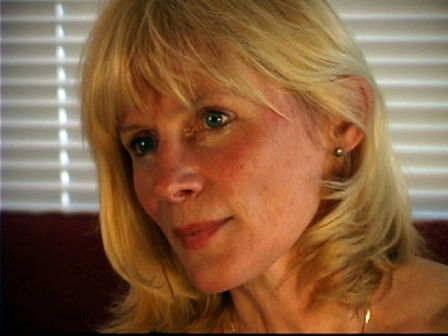Dr. Katherine Ramsland: A Serial Killer’s Postmortem Maze
Israel Keyes, a 34-year-old Anchorage construction worker, was picked up for the kidnapping and murder of Samantha Koenig in Alaska. During his interrogation, he confessed to this murder along with a double homicide in Vermont, and added that he had killed as many as eight people. He hinted that it could be more.
The FBI suspects that he began his killing spree more than a decade earlier and that his victim toll is at least 11. He had named New York and Washington State as places where he’d killed, but he’d traveled in many more states.
However, Keyes committed suicide this past fall before he provided victim names or clearly identifying details, leaving investigators to piece together his puzzle. This has been difficult.
Keyes was a careful predator. He scouted locations and buried his murder kit (knives, ropes, guns, chemicals, zip ties) in various isolated places. When he got in the mood to kill, he would find victims near his stash. He’d partially funded his attacks with bank robberies, but was caught when he tried to get ransom money.
Keyes told investigators that he’d looked for victims in remote locations, such as parks, campgrounds, trailheads, cemeteries and boating areas. He’d also broken into many houses and robbed a number of banks. After his suicide, officials offered some details in the hope that the public might have seen Keyes or have some information about missing people who match the partial descriptions.
On Monday, the Anchorage Daily News and other media outlets ran a feature on a 4-page report that the FBI just released. This might help to jog some memories, so I’m using my blog space to provide this public service appeal:
The following details were in this report:
– Keyes is thought to have traveled internationally and, while living in upstate New York for a time, he might have entered Canada, particularly Montreal.
– During the summer of 1997 or 1998, Keyes grabbed a girl floating the Deschutes River in Oregon on an inflatable tube. He lived in Maupin, Ore. at the time, and the abduction is thought to have occurred near there. It was late afternoon or early evening and the girl, between 14 and 18, was with friends. He sexually assaulted her and let her go.
– Keyes joined the Army in 1998 and was discharged in 2001, when he began living in Washington State. He said he’d killed a couple in Washington some time between 2001 and 2005. He might have moved the couple’s car to a distant location and he alluded to having buried them near a valley. They might have been residents or tourists.
– In either 2005 or 2006, during the summer or fall, Keyes killed in two separate encounters. He tied anchors to at least one of the bodies, which he dumped in Washington’s Crescent Lake, leaving it in more than 100 feet of water.
– Keyes moved to Alaska in 2007, driving north on the Alaska-Canada Highway. He flew to Seattle on Oct. 31, 2008 and traveled to multiple other states. He rented a 2008 PT Cruiser in Seattle, then flew to Boston on Nov. 2.
– Keyes admitted to killing a girl or woman in an East Coast state on April 9, 2009, and robbing a bank the next day. He told investigators he’d crossed multiple state lines to bury the body in upstate New York, then robbed Community Bank in Tupper Lake, N.Y., on April 10. After the bank robbery, he parked for several hours in a nearby campground.
– From July 9 to July 12, 2010, Keyes went on a trip from Anchorage to Sacramento and Auburn, CA, renting a black Ford Focus. He drove about 280 miles in those three days.
– Keyes flew to Chicago on June 2, 2011, and drove to Essex, Vermont, where he abducted and killed Bill and Lorraine Currier on June 8. Afterward, he drove around the East Coast before returning to Chicago. He then flew to San Francisco on June 15, stayed the night there, and returned to Anchorage the next day.
– On Feb. 1, 2012, Keyes abducted Samantha Koenig, raped, and strangled her and dumped her dismembered remains in Matanuska Lake near Palmer, Alaska. He went on a cruise out of New Orleans and came back through Texas. The FBI believes he killed someone at this time. He set fire to a home in Aledo, Texas, on Feb. 16 and robbed National Bank of Texas in Azle.
He was arrested in March and spent hours talking to investigators, but he was cagey with details unless he knew they already had them from his computer. He finally grew irritated that the prosecutors were not upholdng their end of the deal for media silence and a speedy execution. On December 1 or 2, 2012, Keyes slit his wrist with a razor and used a bed sheet to choke himself in a segregation unit at the Anchorage Jail.
The FBI will reportedly release an interactive map of Keyes’ travels today. The agency asks anyone with information on Keyes, his travels or his victims to call 1-800-CALL-FBI.
* * *
Dr. Katherine Ramsland is a professor of forensic psychology at DeSales University in Pennsylvania, where she also teaches criminal justice. She holds a master’s in forensic psychology from the John Jay College of Criminal Justice, a master’s in clinical psychology from Duquesne University, a master’s in criminal justice from DeSales University, and a Ph.D. in philosophy from Rutgers. She has been a therapist and a consultant. Dr. Ramsland has published over 1,000 articles and 46 books, including:
Snap! Seizing Your Aha Moments
Paranormal Forensics
The Mind of Murder a Murderer: Privileged Access to the Demons that Drive Extreme Violence
Inside the Minds of Serial Killers
The Forensic Psychology of Criminal Minds
The Forensic Science of CSI
The Criminal Mind: A Writer’s Guide to Forensic Psychology
True Stories of CSI
Beating the Devil’s Game: A History of Forensic Science and Criminal Investigation
Inside the Minds of Healthcare Serial Killers
Inside the Minds of Mass Murderers
The Human Predator: A Historical Chronology of Serial Murder and Forensic Investigation
Psychopath
The Vampire Trap
The Ivy-League Killer
Piercing the Darkness: Undercover with Vampires in America Today
Dr. Ramsland’s background in forensics positioned her to assist former FBI profiler John Douglas on his book, The Cases that Haunt Us, to co-write a book with former FBI profiler, Gregg McCrary, The Unknown Darkness, to collaborate on A Voice for the Dead with attorney James E. Starrs on his exhumation projects, and to co-write a forensic textbook with renowned criminalist Henry C. Lee, The Real World of a Forensic Scientist.
For seven years, she contributed regularly to Court TV’s Crime Library, and now writes a column on investigative forensics for The Forensic Examiner and a column on character psychology for Sisters in Crime; offers trainings for law enforcement and attorneys; and speaks internationally about forensic psychology, forensic science, and serial murder. She has appeared on numerous cable network documentaries, as well as such programs as The Today Show, 20/20, Montel Williams, NPR, Larry King Live and E! True Hollywood. For ID, she spoke as a recurring expert on the series, American Occult and Wicked Attractions.






This whole case has a *home* fascination for me because the Vermont couple who were murdered lived down the street from me… so incredibly scary he had planned this for such a long time – I’ve been following this on our local news lately, but enjoyed reading about here as well. Thanks for this article.
What a fascinating post. These people are out there and it can be kind of scary.
There was an FBI interrogation tape of this guy released recently. Today’s Huffington Post has a link. Weird rambling conversation, the agent obviously trying to pull out some little bit of information, but careful not to spook him: a twenty-minute window into Israel Keyes, the FBI, and interrogation techniques that shows how laborious and frustrating and glacial the process can be.
Serial killer Israel Keyes tale is certainly frightening as authorities try to piece together his movements and track down possible victims of the killer.
Keyes is far from uncommon as a serial killer in his modus operandi. Many serial killers, such as Gerald Gallego and Keith Jesperson, have moved about the country, often targeting females or couples in out of the way places, before moving on to other locations.
It often takes capturing or killing the suspect before law enforcement even becomes aware that a serial killer has been at work.
In my book, THE DYNAMICS OF MURDER: Kill or Be Killed, I talk about the characteristics of serial killers and other types of killer, do case studies, and explore related factors in homicides.
Also have some examples of serial killers at work in my anthology, MASTERS OF TRUE CRIME: Chilling Stories of Murder and the Macabre, in which both Katherine Ramsland and Lee Lofland contribute excellent true stories.